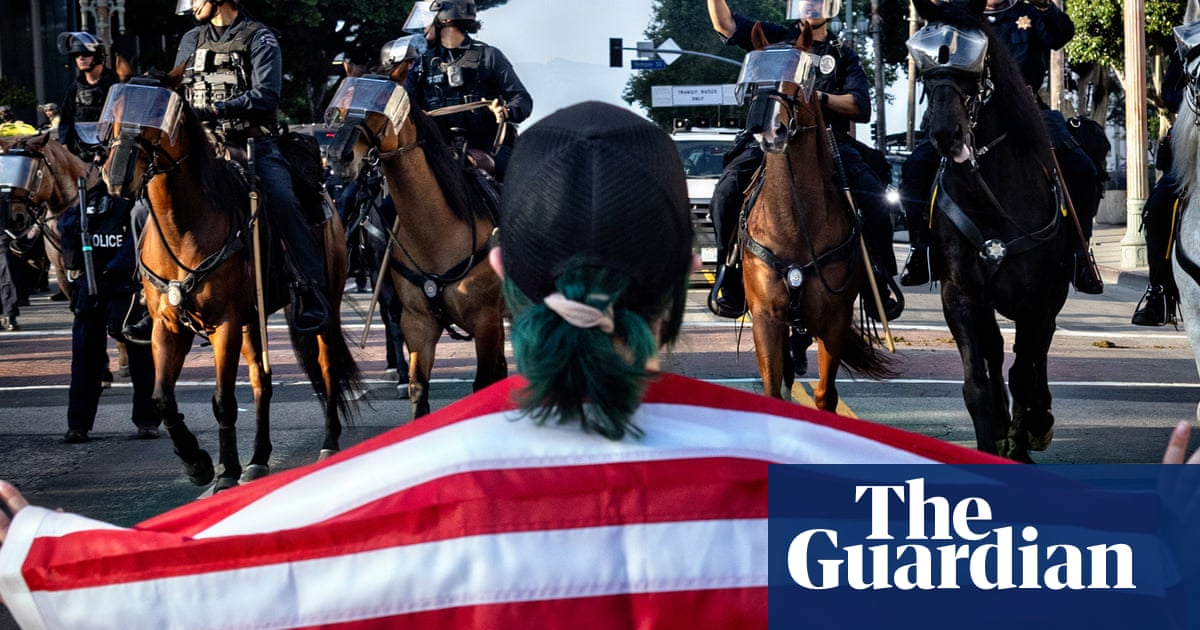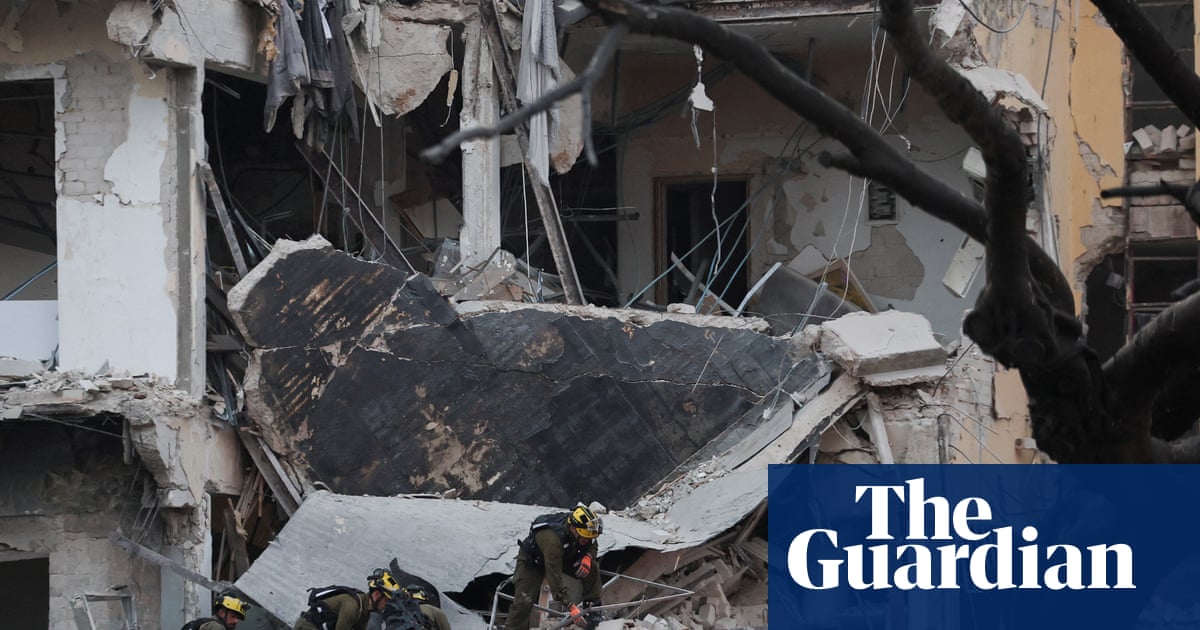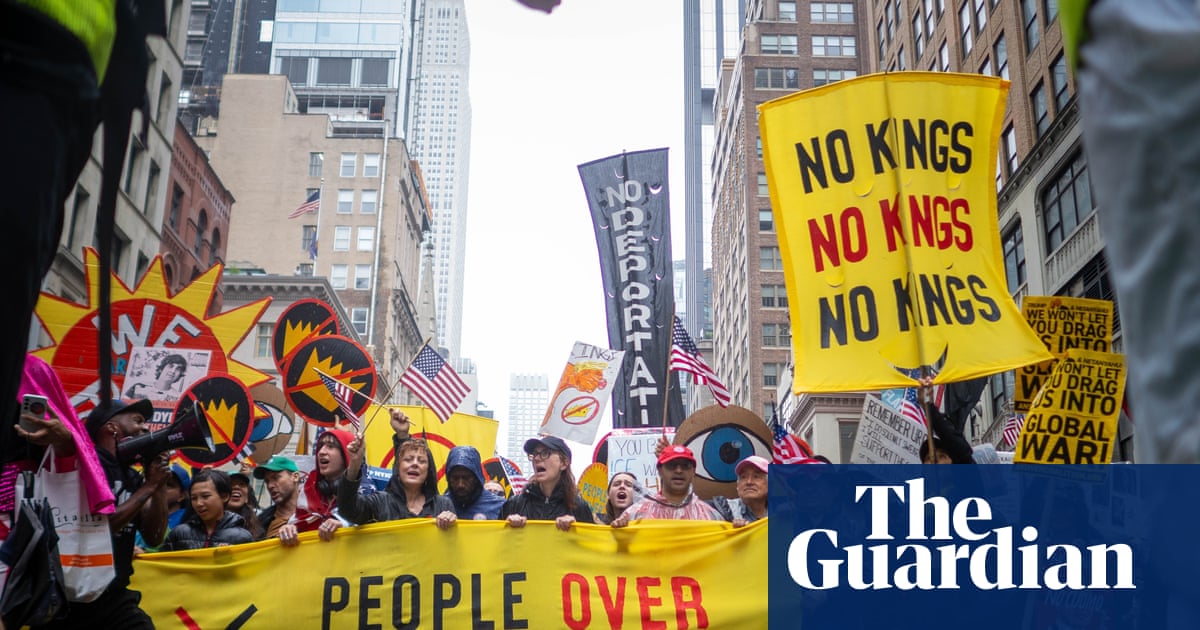America reached its apex of self-parody shortly after 7pm on 14 June 2025. In that moment, the background band at Donald Trump’s military parade segued from Jump by Van Halen to Fortunate Son by Creedence Clearwater Revival, just after the announcer explained that M777 howitzers are made out of titanium.
Nobody, apparently, had considered the lyrics: “Some folks are born, made to wave the flag, they’re red, white and blue, and when the band plays Hail to the Chief, they point the cannon at you.” If this was some kind of surreptitious protest by the musicians, I salute them, but given the time and the place, sheer obliviousness is a better explanation. The crowd, pretty thin, did their best imitation of a cheer.
The US clearly does not know how to do an authoritarian military parade. To be fair, they are just getting started. Authoritarian military parades are supposed to project invincible strength. They are supposed to make your own people impressed with the inhuman discipline of your troops, and to strike fear into your enemies at the capacity of your organization. In Trump’s parade, the soldiers resembled children forced to participate in a half-assed school play, trying to figure out how to avoid embarrassment as far as possible, and the military itself looked better suited to running a Kid Rock tour than a country’s defence.
But do not confuse Trump’s debased parade with a joke or an innocent piece of entertainment. The Trump parade took place in the immediate aftermath of the assassination of Melissa Hortman, a Minnesota state representative. While it was under way, security forces were firing teargas on protesters in Los Angeles.
Violence is coming to define American political life – spectacular violence including the parade and real violence like the assassination of Hortman. Political destabilization is arriving far too quickly to be perceived in its entirety. So much is happening so fast that it’s impossible to keep track of the decline. Increasingly, the question is becoming: when are we going to start calling this what it is?
When I published my book The Next Civil War in 2022, the US was very far from the threshold of what the experts at the Peace Research Institute Oslo defined as civil war, which is 1,000 combatant deaths a year. They defined civil conflict as a 1,000 combatant deaths a year, so the US already fit comfortably in that category. But the definitions of war and conflict never applied perfectly to the American reality, because it is so much bigger and so much more geographically diverse than other countries. As we start to see violence overtaking American political life, the transition is more like a sunset than a light switch. Every day violence becomes more and more settled as the means of US politics.
The parade, and the “No Kings” counter-protests, were both distractions from the fact that American political life is moving away from discourse altogether. Don’t like what the senators of the other party are saying? Handcuff them. Don’t like protestors? Send in the marines. Don’t like the makeup of the House of Representatives in Minnesota? Kill the top Democrat. The political purpose of the parade, from Trump’s point of view, was to demonstrate his mastery of the means of violence. He needed to show, to the military and to the American people both, that he can make the army do what he tells it, and established traditions and the rule of law will not alter his will.
But the primary effect of the parade was to demonstrate an immense weakness, in Trump and in the American people. It was a parade reminiscent of the most vacuous regimes in history. In 1977, Jean-Bédel Bokassa, the leader of the Central African Republic, declared himself emperor and indulged in a coronation that imitated the coronation of Napoleon I in immaculate detail. He even went so far as to use eight white Norman horses to pull the carriage, but the French horses were not used to the climate and several died. Trump’s parade felt like a lazier version of that.
The spectre of defeat hovered over the entire celebration of supposed strength. The last time the US military threw a parade was 1991, which was the last time they triumphed over an opponent, the last time their war machine produced the results they had been attempting. The US has not won a war since then. But hey, if you can’t win a war, at least you can throw a parade.
Except they couldn’t even throw a parade! The end of the show was almost too perfect. A frail Lee Greenwood, a country singer long past his “best before” date, sang God Bless America raggedly, lousily. “Our flag still stands for freedom,” he sang. “They can’t take that away.” O can’t they? Trump at the center fidgeted like a rich kid bored with his servants and toys. The whole business was like watching some sordid fairy tale: the unloved boy who everybody hated grew up to force the American people to throw him a birthday party and give him a flag. And then almost nobody came.
What’s true of men is also true of countries: the more they need to show off how strong they are, the weaker they are. The weakness, rather than the strength, is terrifying. Whoever is so scared and so needy as to need that parade is capable of anything. That goes for Trump, and that goes for his country.
-
Stephen Marche is the author of The Next Civil War

 14 hours ago
4
14 hours ago
4

















































